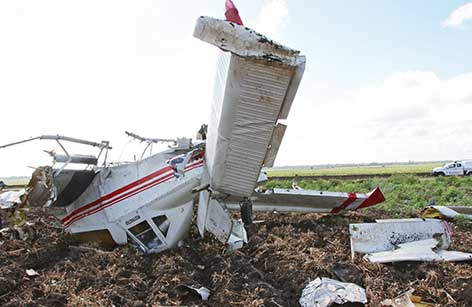The ATSB is reminding pilots, especially those involved in agricultural operations, to wear a correctly fitting helmet to reduce the risk of more serious head injury.

On 1 December 2017, the pilot of an M-18A Dromader aircraft was carrying out agricultural spray operations on a paddock north-west of the Emerald Airport in Queensland.
At about 0620, the aircraft was seen completing a spray run and commencing a turn to the right to line up for another spray run. About three quarters through the turn, the aircraft pitched down and the right wing collided with the ground. The aircraft flipped, and come to rest, inverted, facing in the opposite direction about 20-30 m from the initial contact point.
The pilot was able to exit the aircraft and the aircraft was substantially damaged. The ATSB was unable to determine the reason for the aircraft’s downward pitch during the turn. The pilot had no recollection of the accident and no mechanical issue was identified that may have contributed to the accident.
The pilot was wearing his personal flight helmet during the flight.
…pilots involved with agricultural operations are particularly vulnerable to accidents involving major or fatal head injury…
The ATSB found that the pilot’s personnel flight helmet struck the internals of the cockpit and based on the extent of damage to the helmet, it probably prevented the pilot receiving a more serious head injury.
The International Civil Aviation Organization circular Safety in aerial work Part 1. Agricultural Operations discusses the importance of wearing a correctly fitting flight helmet and highlights the pilots involved with agricultural operations are particularly vulnerable to accidents involving major or fatal head injury and the need for a helmet to be part of a pilot’s personal flying equipment.
Read the final report: Collision with terrain involving PZL Warszawa-Okecie M-18A Dromader, VH-WHR, near Emerald Airport, Queensland, on 1 December 2017


